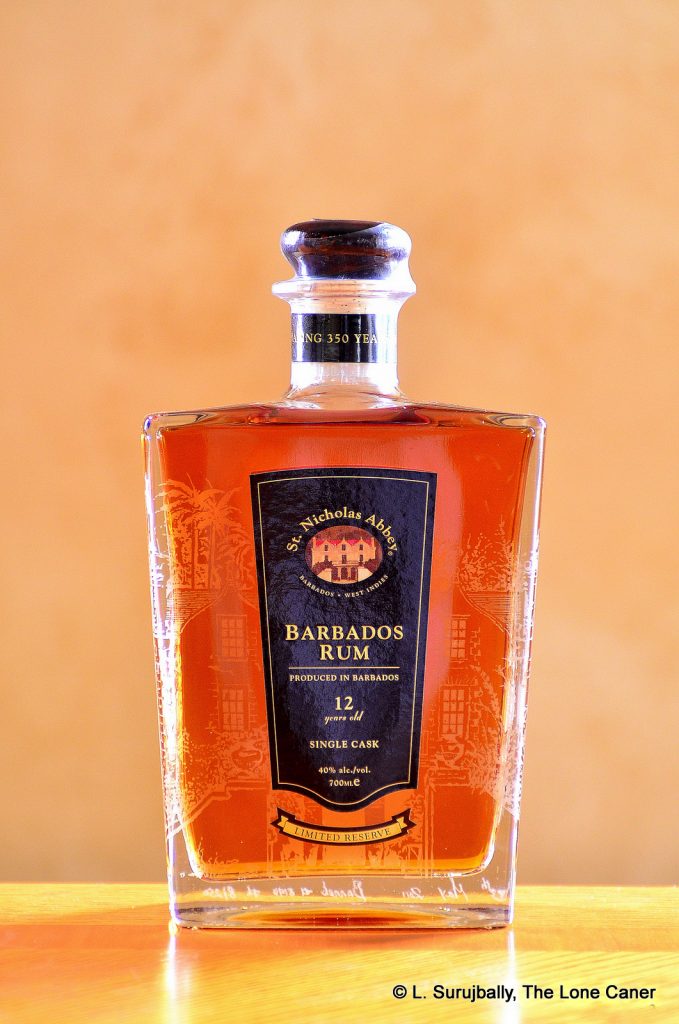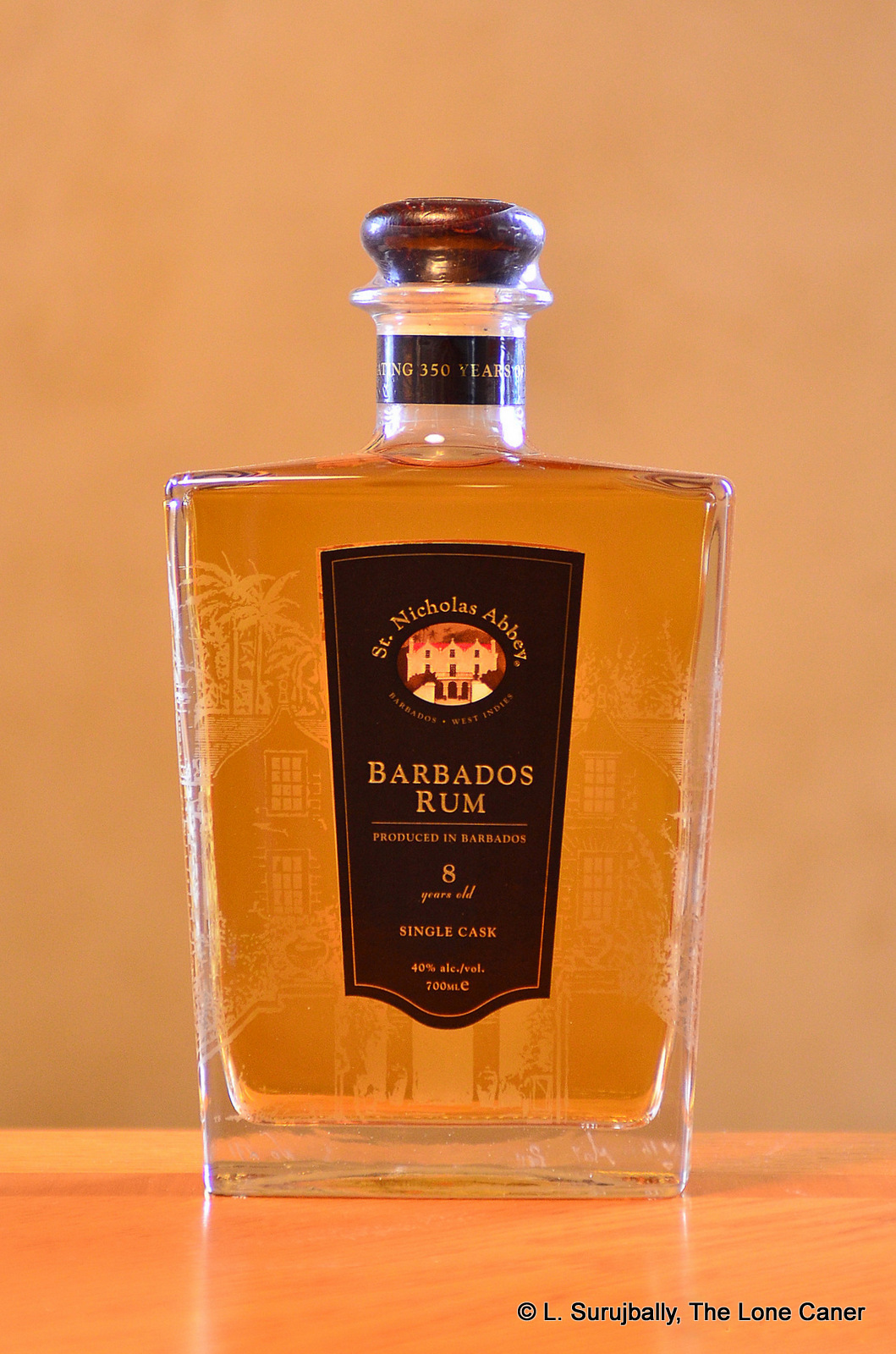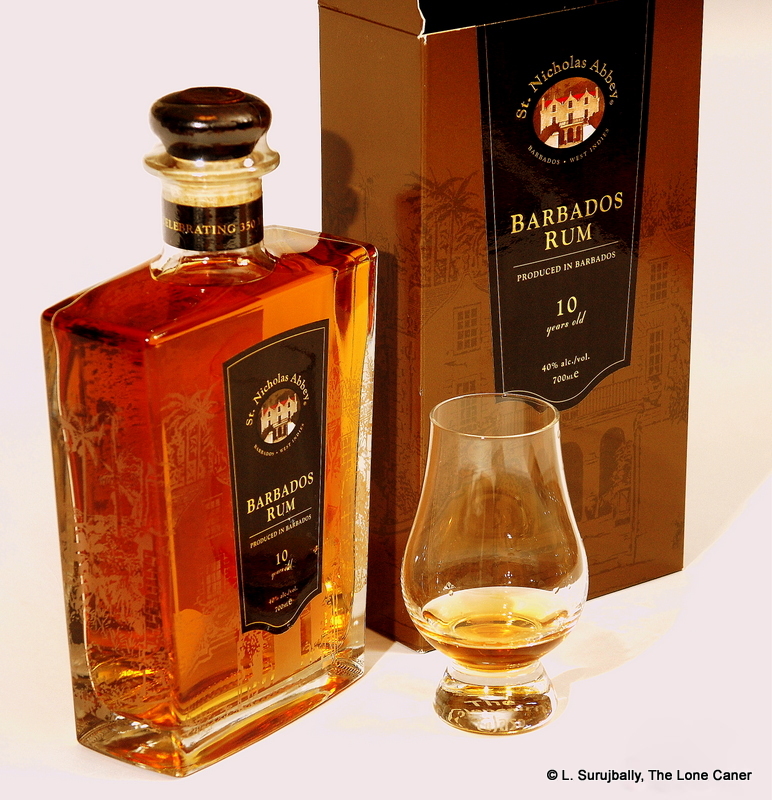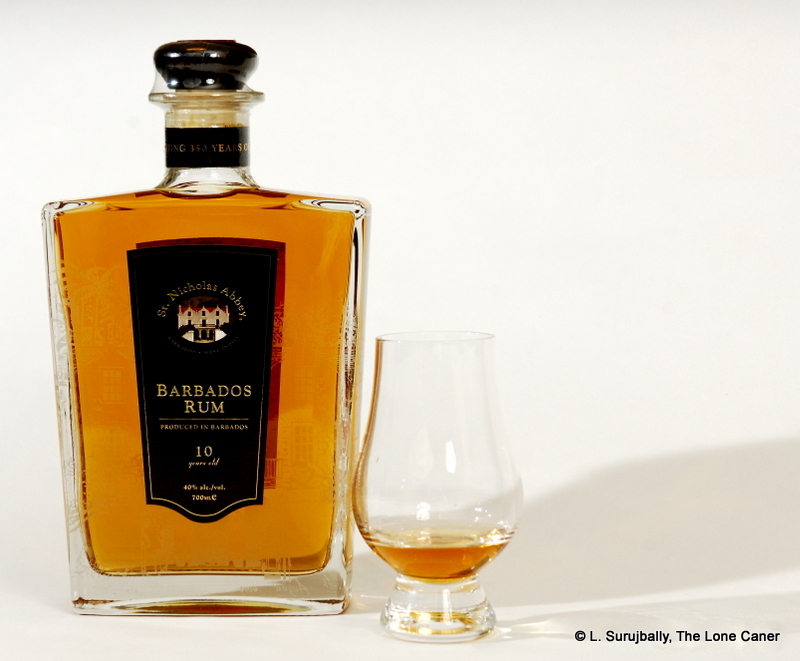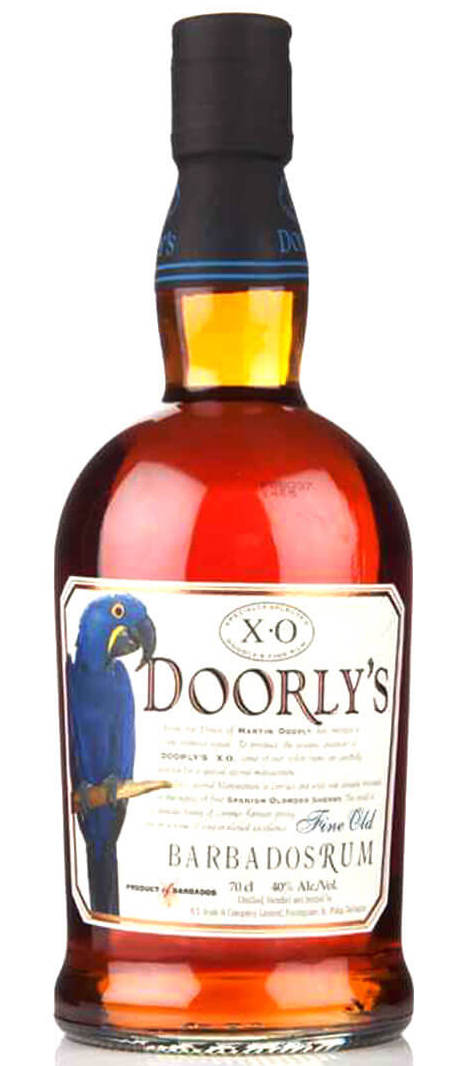First posted 2nd September 2011 on Liquorature
A worthy successor to the 10 year old which was also expensive and extremely well made. Succeeds, in my opinion, on just about every level: presentation, nose, taste, finish and aesthetics. This is the point where you start telling yourself maybe two hundred bucks may not really be that much to blow on a single rum…but ensure the spouse concurs.
You’ve got to hand it to the Abbey. Not being content to rest on their laurels with the very excellent 10 year old I was so taken by, they issued the dark gold 12 year old limited edition rum, and built on all of its predecessor’s strengths. This is not surprising since it was the remaining stocks of the ten which form the twelve (original barrels of the ten are now exhausted or aged past ten years). And they have changed nothing except the rum itself: the etched square-shouldered bottle showing the Jacobean plantation house, mahogany tipped cork, the cheap cardboard box which Keenan so applauds, the thin wrapping paper with the company logo…all this remains the same.
St Nick’s, having emerged as a surprising new quality distillery in 2006 after the Warrens bought out the prior landholders, initially had R.L. Seale distil their product and then aged it themselves; though previously they had shopped around for stocks from all over Barbados and other places which to age in their first offerings, these days they are laying down stocks themselves using a newly acquired German distilling unit, and have impressive plans to increase their product line (I made some notes about this in the 8-yr old review if you’re interested).
“It’s not about what the movie is about,” remarked Roger Ebert once, “But how the movie is about it.” By that standard, how should we discuss this rum? By its nose, its flavour, its look, the bottle, the colour, how it’s distilled, blended, bottled…what? Having written enough prose about both the eight year old and the ten year old, how can I go on from there?
I could say, for example, that it is a modern day reimagining of Bajan styles of old, or that it originates from both pot and column stills, and is aged for 12 years in white oak barrels. I could add that it is made not from molasses but from concentrated cane syrup subsequently double-distilled to about 92% prior to ageing (unlike agricoles from the French terroires, which generally limit their distillation to 70% before barreling). Then I could go on: that it has a deep, rich, dark rich nose of currants and jam, cherries, peaches and fleshy ripe fruits, redolent of breakfast spices and a touch of caramel, and tastes of jasmine and hibiscus arrangements dusted with cinnamon. But what does all this really tell you beyond dry facts you’re probably sick of and may not even agree with? Not much. What about taste, then? Would it make a difference if I noted its slightly salty-sweet tang, or its heavy body about on par with an ED 15, hints of banana and papaya melding gently into a buttery-soft mélange of fruit and brown sugar? And the long smooth, lasting finish that clutches your tonsils with the tenacity of a junkie clutching a five?
Maybe not.
So let me go off in a different direction for the more poetic among us. This rum is a hug from your mother when you had a skinned knee and came home holding back tears — in the warm softness of her comfort, all good things came back and the hurt was forgotten. The taste of this exquisite twelve year old is of a lazy Sunday breakfast with your first real lover after a good night before, and a great kiss after (substitute the word you’re thinking of), with french toast, hot strong coffee and the fixin’s melting in your mouth as you wolf it down in the warm morning sunlight of a great new day. And the finish is redolent of the smooth feeling of power that envelops you when you win a hard fought battle – in the office or on the field or in the street – and deservedly bask in the accolades. The world is your oyster. This rum goes well with it.
The St. Nicholas Abbey 12 year old Limited Reserve is not cheap. At two hundred dollars in Calgary, I have to be honest and concede that I thought long and hard about buying it – I can get the 21 YO El Dorado, or the English Harbour 25 YO, for less, and both are older vintages, proven tastes, made by well established companies for which I have great respect. I know I’m paying this price because of limited production, not entirely because it’s so good. Honestly, had it not been for the ten that St Nick’s had already won me over with, as well as their instant and honest answering of every question I had when researching this review, I might have held off.
But I must be honest: this is a reminder of what rums can be, in a conformist and lowest-common-denominator culture where blended product and cheaply spiced rums sell by the truckload, and many people have no idea that “top-end” and “rum” can be said in the same breath. And as I’ve observed before, rums are not for any one thing: some take the edge off our anger, some help us forget and take us away from our problems, some are best with which to observe a sunset, some are to toast the great events in one’s life, and still others are to share with one’s best friend over an evening spent playing chess and indulging in a desultory sort of harum scarum conversation. What is so wonderous about the twelve, and what makes me recommend it, is that in some measure, it is good for, and does, all these things.
(#084. 86/100)
